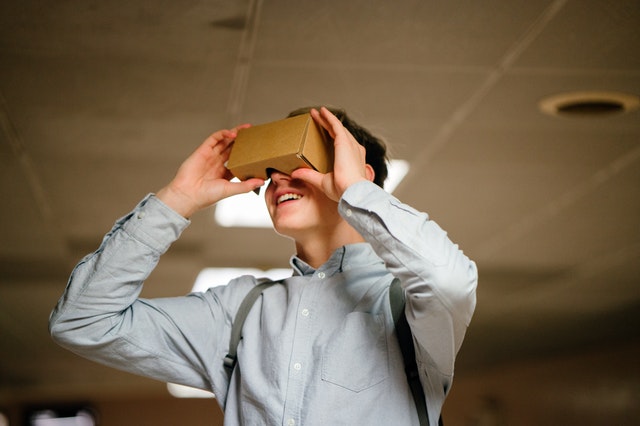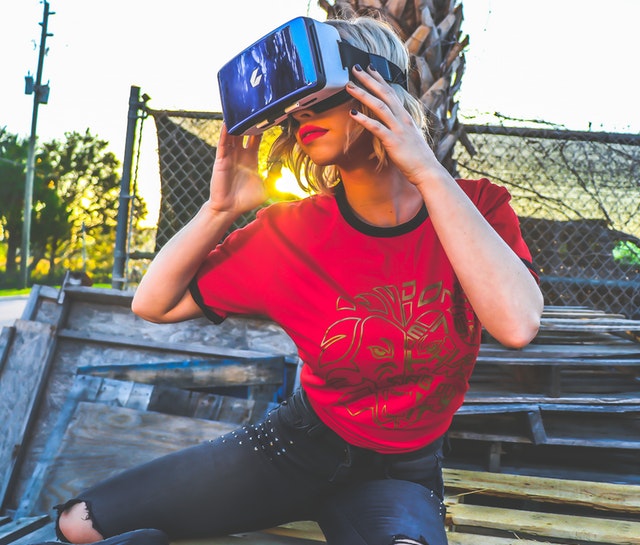With improvements to virtual reality technology, many creative industries are opening up to seemingly unlimited new possibilities as we discover unprecedented ways to tell compelling stories through the medium of Virtual Reality (VR). Experimentation and opportunity are the name of the game in this thrilling new medium, which is why the New York Film Academy is launching three distinct new VR programs this year.
Because VR allows for participatory experiences, it has pros like being able to establish empathy and allowing viewers to be engaged as more than passive observers. Yet VR also has its drawback, such as no longer being able to fully direct where the viewer looks and the details they choose to focus on. In many ways, these are the challenges the gaming industry has faced with first-person POV games where players’ decisions throughout gameplay lead to different outcomes. However, in most games that are structured this way, there is also an “ideal” storyline where players who make the intended decisions get the best experience from the game, and there are cues to get players to make different decisions in order to maintain the story. Cut scenes also help stitch together the narrative and keep players moving in the “right” direction.

Some of the decisions visual storytellers need to make include how to make sure the audience will stumble upon the right objects and details to make sense of the story. Unlike “Choose Your Own Adventure” books, which had set paths and a limited number of choices, VR potentially opens up a simulation of real life where 10 different people in any given situation will make 10 different decisions. This means storytellers still need to find a way to guide the narrative, whether that is staging the environment so that only truly key objects attract attention or creating compelling interactions with the characters.
How can filmmakers and other creative storytellers use VR in their own projects? Let’s look at a couple of examples that show how filmmakers are tackling these issues.
“Henry” is a short film by Oculus Story Studio that centers on character interaction. In “Henry,” one thing that keeps the story unfolding in the intended direction is the interaction with the character. When he makes eye contact and recognizes the viewer with a little smile, it draws the viewer into his story and establishes empathy. There is also very little in the environment to distract the viewer.
Katy Newton and Karin Soukup describe their decisions for creating the narrative in “Taro’s World” as “influencing” rather than “directing” the storytelling. In their article on Medium, they write about how camera angles, the objects in the scene, the actions of other characters can be set up to guide the viewer’s interaction with the environment.

News outlets are also using VR to help take viewers on location. USA Today recently featured a 360° look at Joshua Tree National Park, which gives viewers a chance to “ride” on a zip-line through the park and have a face-to-fur encounter with a grizzly bear.
Perhaps documentary filmmakers will lead the way in making the most of VR as they put the viewer in a specific environment, allowing them to explore the world as the documentary subjects experience it. As Sir David Attenborough explains, one of the great advantages of VR technology is being able to immerse the viewer in the experience with audio and visuals in a way that can’t be done in traditional film. This piece from StoryUp about the lack of mobility options for the disabled in Zambia lets the viewer see how hard it would be to have to crawl everywhere and be dependent upon others for one’s most basic needs.
How can you get started? While this article from the NYFA’s student resources is about VR in game design, it will help you think about the possibilities VR offers. Charlotte Raymen also offers some advice on equipment and camera usage on the Raindance blog. Jesse Damiani has several tips for VR storytelling in this article for the Huffington Post.
At NYFA, we believe the best way to learn is by doing. Check out our Virtual Reality workshops to learn more.
